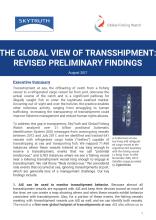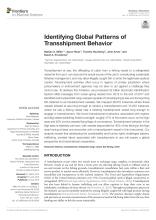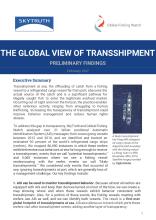The Global View of Transshipment - Revised Preliminary Findings
In this research study, Global Fishing Watch uses AIS information to identify where transshipment can be happening and who is doing it. About 42 percent of potential rendezvous (what is identified through AIS data to track transshipments) occur on the high seas, with the rest happening within the EEZs of different nations–especially Russia. It is concerning, however, that those areas with higher levels of reported IUU fishing correlate with areas of high potential rendezvous. With such a high level of transshipments occurring on high seas, the global community could not only benefit from using AIS data to identify illegal transshipments but must also cooperate to address lax oversight and control. This revised report improves on the methodology of the earlier finding in February 2017.
Language


